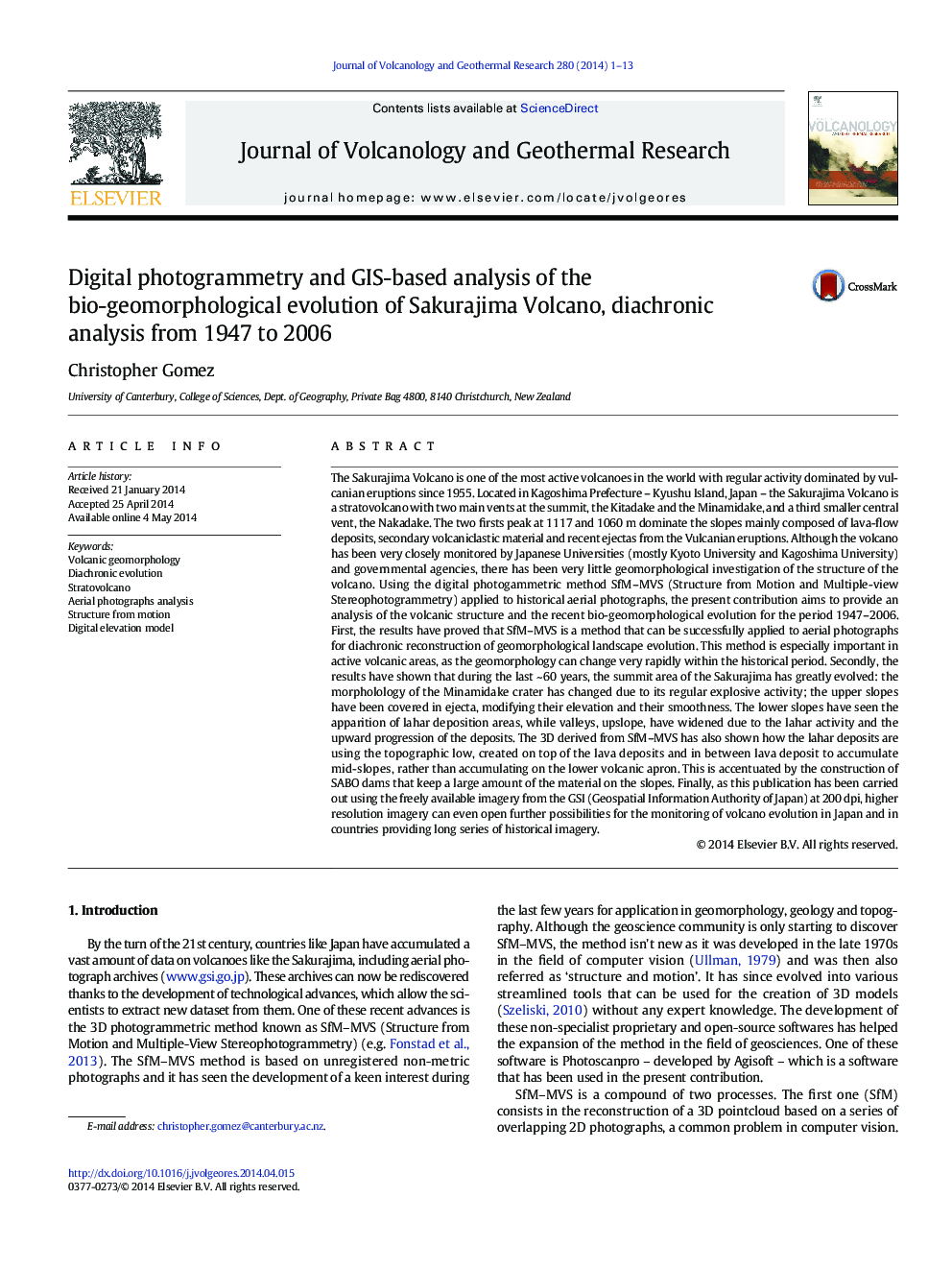| کد مقاله | کد نشریه | سال انتشار | مقاله انگلیسی | نسخه تمام متن |
|---|---|---|---|---|
| 6440012 | 1638342 | 2014 | 13 صفحه PDF | دانلود رایگان |
عنوان انگلیسی مقاله ISI
Digital photogrammetry and GIS-based analysis of the bio-geomorphological evolution of Sakurajima Volcano, diachronic analysis from 1947 to 2006
دانلود مقاله + سفارش ترجمه
دانلود مقاله ISI انگلیسی
رایگان برای ایرانیان
کلمات کلیدی
موضوعات مرتبط
مهندسی و علوم پایه
علوم زمین و سیارات
ژئوشیمی و پترولوژی
پیش نمایش صفحه اول مقاله

چکیده انگلیسی
The Sakurajima Volcano is one of the most active volcanoes in the world with regular activity dominated by vulcanian eruptions since 1955. Located in Kagoshima Prefecture - Kyushu Island, Japan - the Sakurajima Volcano is a stratovolcano with two main vents at the summit, the Kitadake and the Minamidake, and a third smaller central vent, the Nakadake. The two firsts peak at 1117 and 1060Â m dominate the slopes mainly composed of lava-flow deposits, secondary volcaniclastic material and recent ejectas from the Vulcanian eruptions. Although the volcano has been very closely monitored by Japanese Universities (mostly Kyoto University and Kagoshima University) and governmental agencies, there has been very little geomorphological investigation of the structure of the volcano. Using the digital photogammetric method SfM-MVS (Structure from Motion and Multiple-view Stereophotogrammetry) applied to historical aerial photographs, the present contribution aims to provide an analysis of the volcanic structure and the recent bio-geomorphological evolution for the period 1947-2006. First, the results have proved that SfM-MVS is a method that can be successfully applied to aerial photographs for diachronic reconstruction of geomorphological landscape evolution. This method is especially important in active volcanic areas, as the geomorphology can change very rapidly within the historical period. Secondly, the results have shown that during the last ~Â 60Â years, the summit area of the Sakurajima has greatly evolved: the morpholology of the Minamidake crater has changed due to its regular explosive activity; the upper slopes have been covered in ejecta, modifying their elevation and their smoothness. The lower slopes have seen the apparition of lahar deposition areas, while valleys, upslope, have widened due to the lahar activity and the upward progression of the deposits. The 3D derived from SfM-MVS has also shown how the lahar deposits are using the topographic low, created on top of the lava deposits and in between lava deposit to accumulate mid-slopes, rather than accumulating on the lower volcanic apron. This is accentuated by the construction of SABO dams that keep a large amount of the material on the slopes. Finally, as this publication has been carried out using the freely available imagery from the GSI (Geospatial Information Authority of Japan) at 200Â dpi, higher resolution imagery can even open further possibilities for the monitoring of volcano evolution in Japan and in countries providing long series of historical imagery.
ناشر
Database: Elsevier - ScienceDirect (ساینس دایرکت)
Journal: Journal of Volcanology and Geothermal Research - Volume 280, 1 June 2014, Pages 1-13
Journal: Journal of Volcanology and Geothermal Research - Volume 280, 1 June 2014, Pages 1-13
نویسندگان
Christopher Gomez,